Contact Us. Web site contents copyrighted. All rights reserved. Made With Serif WebPlus. Home

49 Mountain Habitat Restoration and Fuels Reduction Project
Project Located Near Vya, Washoe County, Nevada
BLM Surprise Field Station, Cedarville, California
Before Implementation, September 2016
The 49 Mountain juniper removal project, 711 acres, is located about 16 miles northeast of Cedarville, California and is in Washoe County, Nevada. The Decision Rationale states that implementing the 49 Mountain juniper removal project will “...reduce juniper cover, improve sage-grouse habitat and reduce hazardous fuels.” The rational also states that “Long term benefits will include improved watershed stability, wildlife habitat and increased vegetation diversity.”
Under Standard Resource Protection Measures we find the following mitigation measures and Standard Operating Procedures, SOPs, for the 49 Mountain project:
1. “Preserve clumps of juniper scattered throughout the treatment area ( 5-10 trees per acre)...”
2. “Create openings in stands of trees that are irregular and natural in appearance.”
3. “All slash that is not going to be removed or burned will be lopped and scattered to a height of no more than three feet.”
4. “BLM will provide project inspection at least once weekly during the implementation phase when contractors are completing project implementation.”
5. “Individual old growth trees in restoration areas would be identified...and preserved for their many social and ecological values.”
6. “In stands where more than 75% of trees exhibit old growth characteristics, no juniper will be cut.”
7. “In stands with 50-75% old growth juniper, up to 25% of young juniper may be removed.”
8. “In stands with 25-50% old growth juniper, up to 50% of young juniper may be removed.”
9. “In addition to preserving old growth trees, efforts would be made to maintain functioning ecosystems in historic juniper woodlands, especially those with a significant old growth component, --- soils data could be used to identify potential historic juniper woodlands, but on the ground verification of their presence would be completed before project implementation.”
The measuring stick has six inch increments.
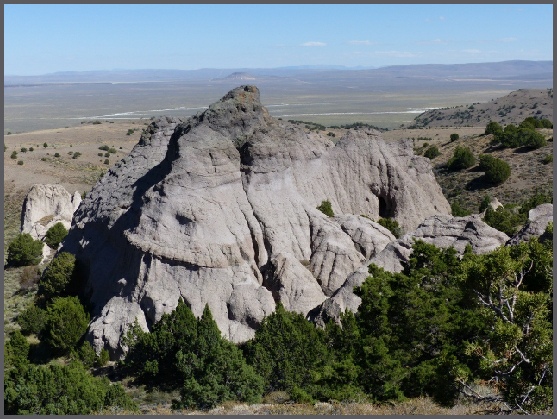
DOI-BLM-CA-N020-2016-0003-DR
Based on the mitigation and Standard Operating Procedures (SOPs) from the Decision Record, listed to the left, it is apparent that the BLM intends to preserve and protect the very important old growth juniper found in the 49 Mountain project area. Further more the ninth SOP listed to the left says that the BLM will use on the ground verification of the old growth juniper present before implementation of the project. As an aid to the BLM, we have provided them with GPS points for about 350 old growth juniper trees within the 49 Mountain project from the four small areas located by arrows in the satellite image below. We also have photos of each of the old growth trees along with their GPS points. However there are many more old growth juniper on the 49 Mountain project that we have not documented at this time.
Unfortunately the BLM personnel that write and sign the documents are not the same people that run the chainsaws. The weak link in every juniper removal project that we have documented is the communication between the BLM project supervisor and the project contractor and then the communication between the project contractor and the laborers operating the chainsaws. Ultimately the laborers make the final decision on whether or not a juniper is an old growth and therefore whether to cut it down or not.
A simple solution exists to this persistent problem for the BLM. If the BLM would simply flag off old growth juniper stands/woodlands from cutting while they are on the ground verifying their presence, we are sure very few old growth trees would be cut down since contractors and their employees almost always respect flagged off boundaries.
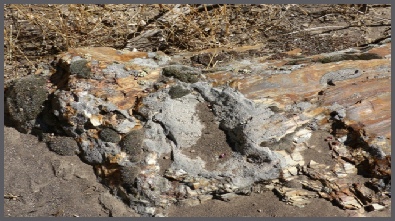
Lichen growing on a log of petrified wood within the 49 Mountain project.
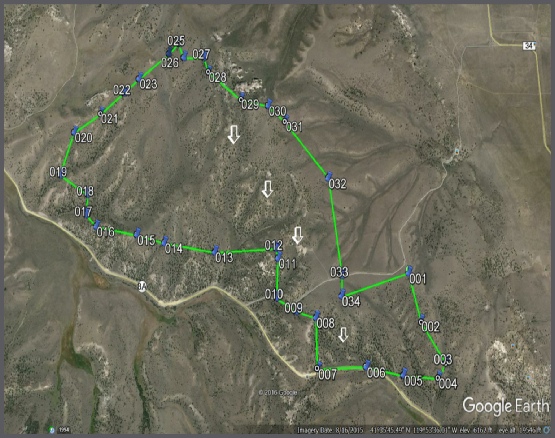
A satellite image showing the approximate boundary of the 49 Mountain juniper project. The arrows indicate where we have documented about 350 individual old growth trees with GPS points and photos so far. There are still hundreds of old growth juniper left in this project that we have not documented yet.
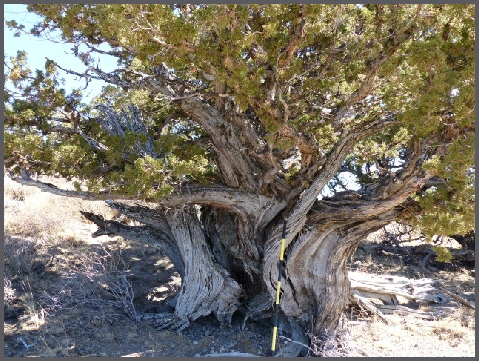

The 49 Mountain juniper removal project is in an area where Western Juniper and Utah Juniper and their hybrids are both found. The very old juniper in the left image is typical of old Utah Juniper and the very old juniper in the right image is typical of old Western Juniper in this area.

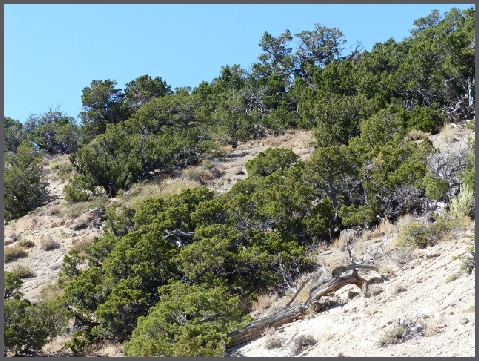
Much of the old juniper within the 49 Mountain juniper removal project consists of dense stands of nothing but very old juniper. Number six in the Standard Operating Procedures above states: “In stands where more than 75% of trees exhibit old growth characteristics, no juniper will be cut.” If the BLM would just flag areas such as these as off limits none of these very old juniper trees would be needlessly cut down by “mistake”.
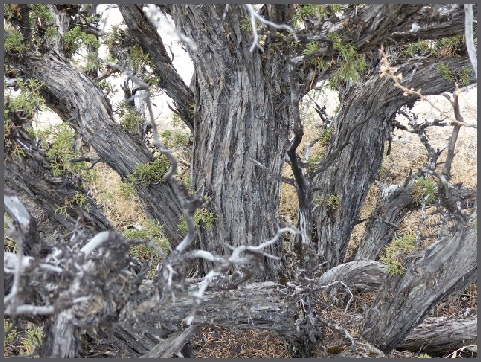
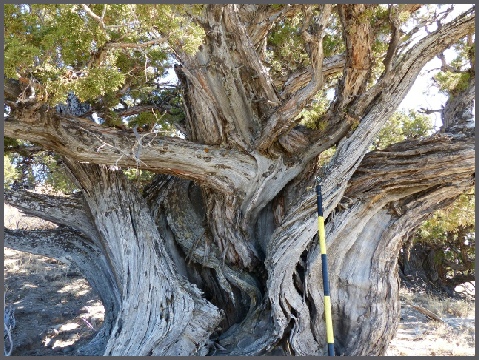
The BLM in past projects, Home Camp especially, cut down hundreds of old growth juniper similar to the one in the image at the left. They also cut down very old juniper similar to the one in the image at the right where we were able to estimate the age of cut old trees up to 660 years of age. We are hoping the BLM makes sure the characteristics of old juniper are communicated in a way to the contractor and chainsaw operators so that old juniper will not be cut down during implementation of the 49 Mountain project.
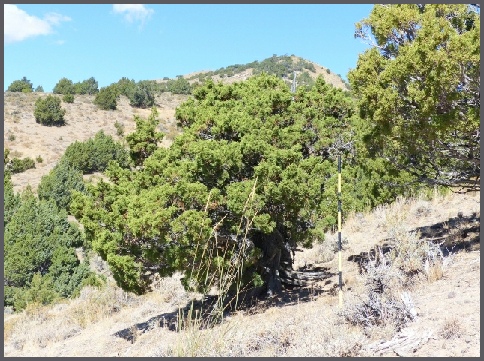
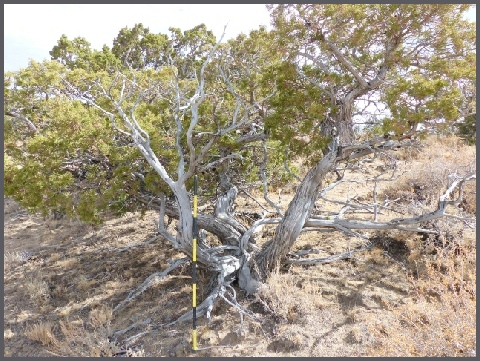
Both of these old growth juniper will likely be cut down by the BLM during implementation of the 49 Mountain juniper removal project even though both trees have multiple morphological characteristics of old growth juniper: asymmetrical tops containing dead wood, deeply furrowed fibrous bark and limited terminal leader growth. However since both are short and with smaller diameter trunks the BLM usually cuts these old growth trees because of their size. Size is not an indicator of age when it comes to old juniper, however the BLM consistently cuts down small old growth juniper during juniper removal projects.
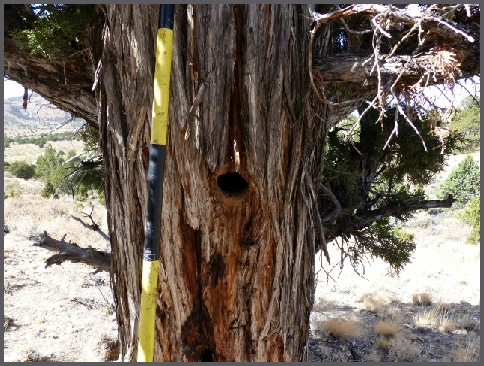
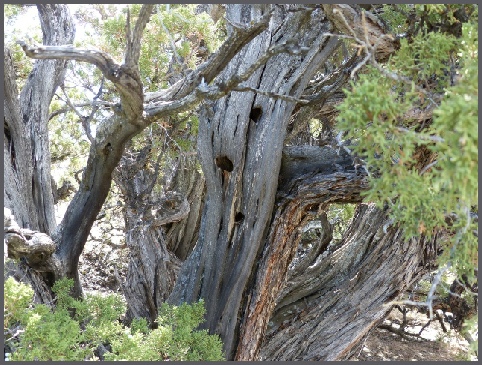
Old growth Western Juniper and Utah Juniper are the only trees available for cavity nesting birds in the 49 Mountain juniper removal project. We found several old trees with active cavity nests in this project area. The only mention in the mitigation and SOPs concerning bird nests was regarding raptor nests, nothing about active cavity nests for migratory birds. We will specifically monitor the several cavity nests that we found in the old growth juniper throughout the project area during implementation.
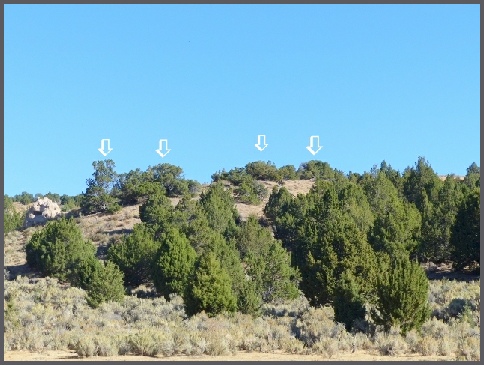
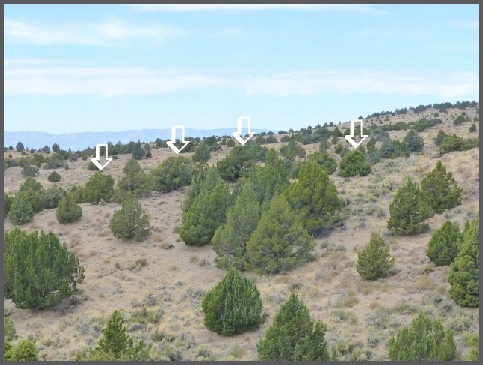
Both of these images show areas within the 49 Mountain juniper removal project where groups of young juniper and old growth juniper intersect. The stands of old growth juniper in the backgrounds along the ridges (follow the arrows) are identified by their asymmetrical shapes. The young juniper in the foreground of both images are identified by their pointed symmetrical shapes. We will return after implementation is completed to verify that the BLM cut only young juniper as they stated in the Decision Record documents.
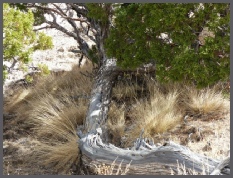
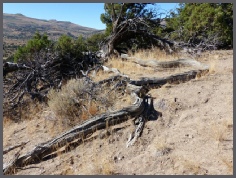
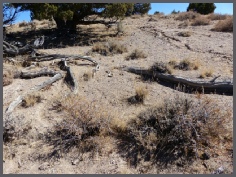
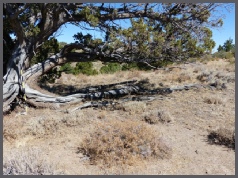
The Decision Rational for the 49 Mountain juniper removal project states that a long term benefit of removing young juniper will be improved watershed stability. We have found that the old juniper trees on the gravelly slopes, along with other vegetation, are about all there is holding back the erosion in this area. Some of the exposed roots from the old juniper were up to 50 feet long. It is imperative the BLM makes sure the old growth juniper is not cut down.
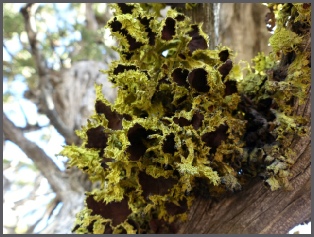
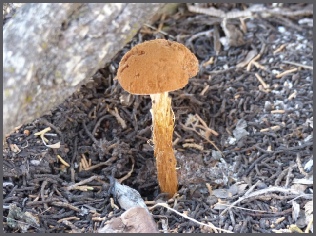
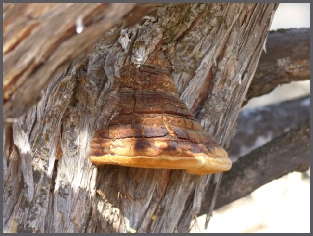
We found many interesting fungi and lichen, all associated with the old growth juniper, within the 49 Mountain juniper removal project.
49 Mountain Project Completed
October 2019
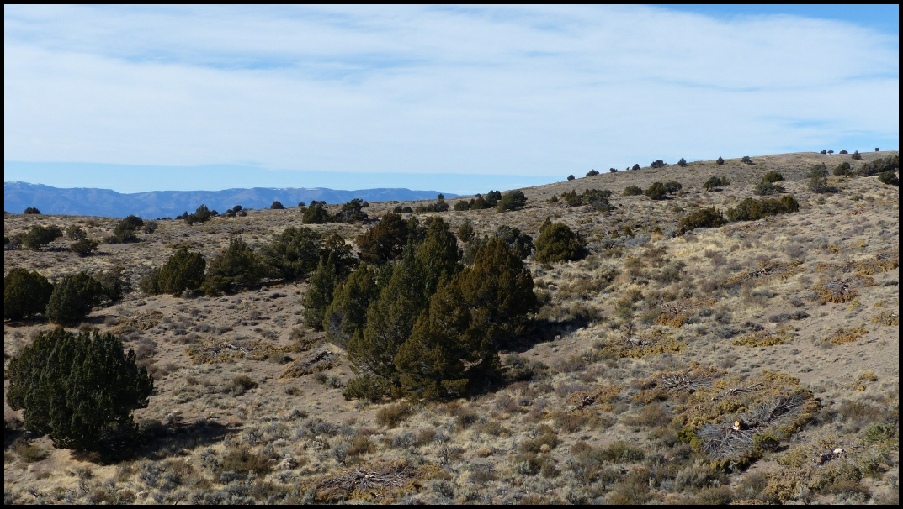


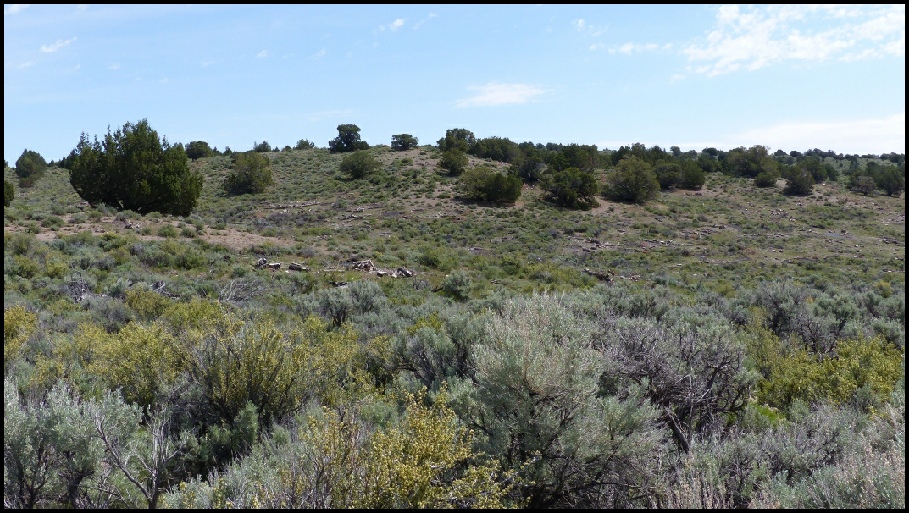
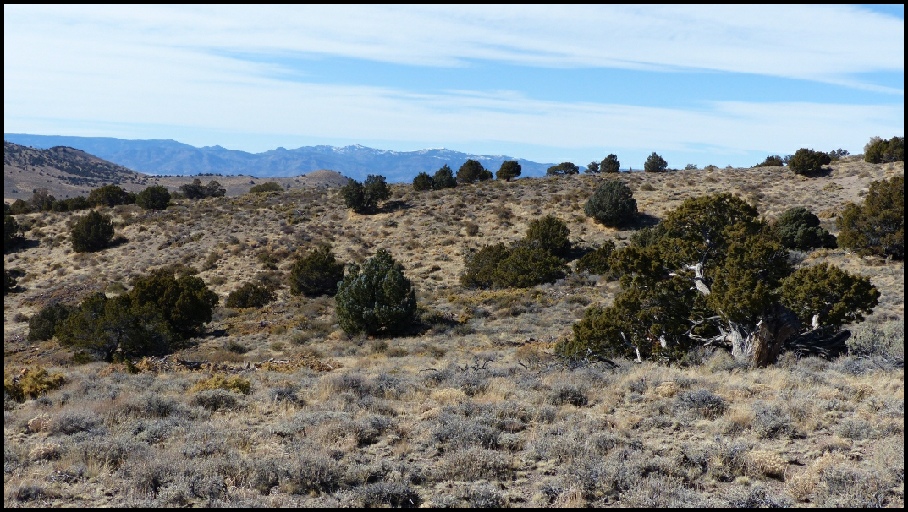
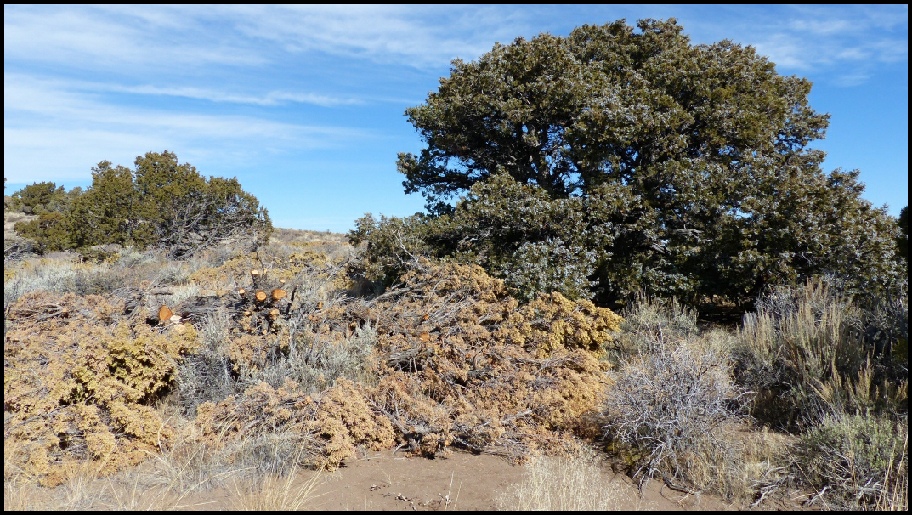
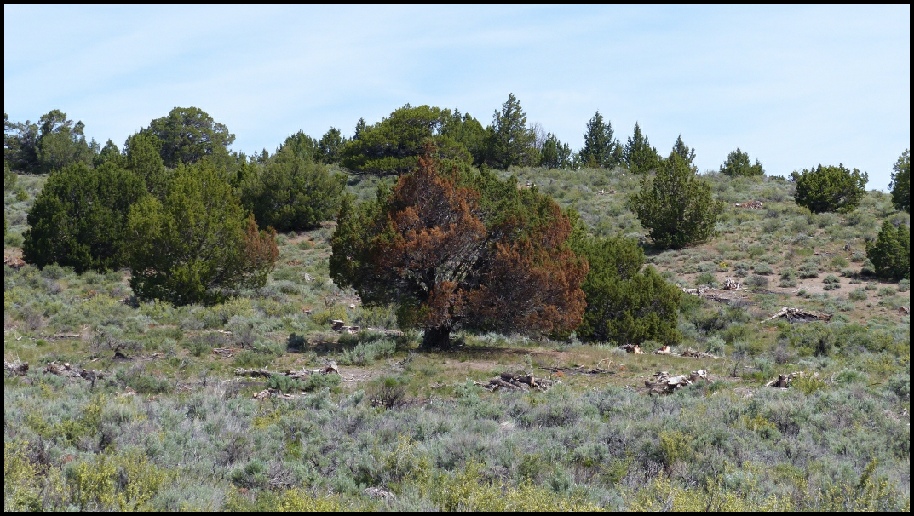
Congratulations to the BLM Cedarville Field Office for a job well done on the 49 Mountain Juniper Project. We did not find any old growth juniper cut down on the completed project that we inspected. Old growth woodlands were left intact as well as a few younger trees within groups of older trees. Our only complaint is a continuing complaint with most juniper projects: slash is often piled under and next to the old juniper. When the slash is burned the old trees are burned along with the slash. The two images immediately above clearly show the problem and the result.